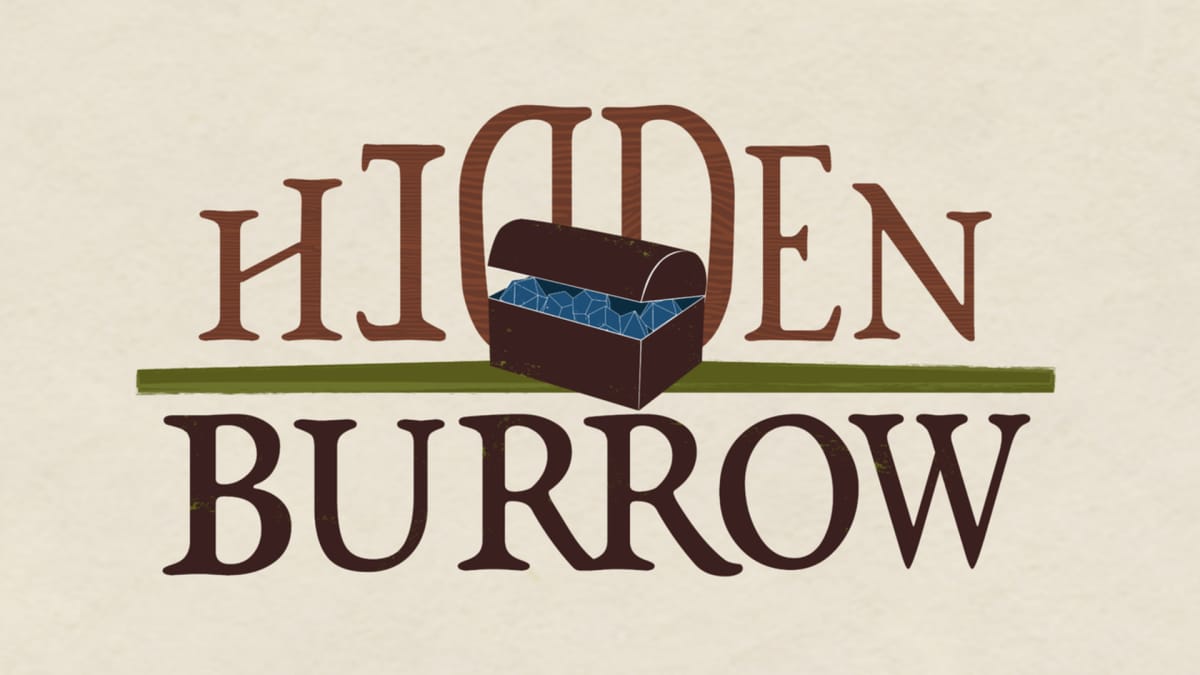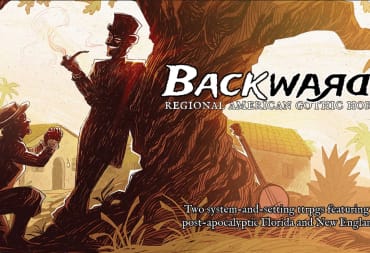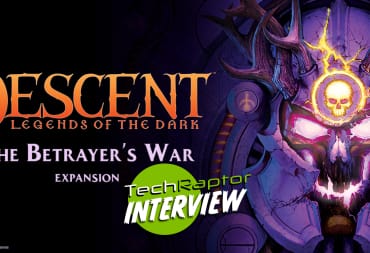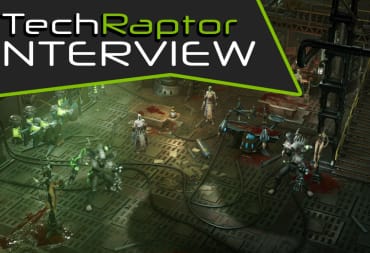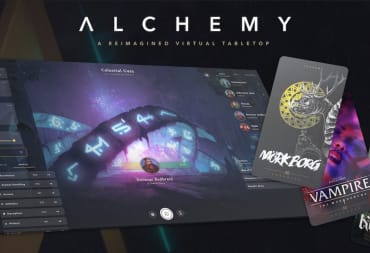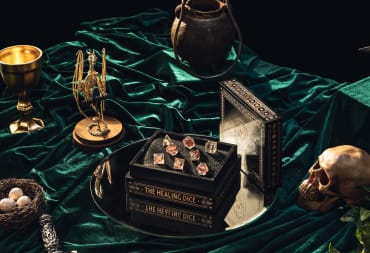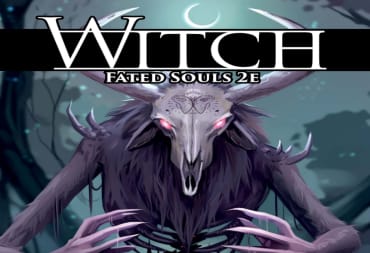Imagine buying a game online and then printing it out. That’s what you can do with Hidden Burrow’s library of titles, each a tabletop experience that you buy, print, cut out, and play. The four games the company have launched so far include the Tarot-card inspired Mystic Match, the simple Slap Jack-O-Lantern and Go Dig!, and a potion-themed game called Witches’ Brew for which you print out and construct your own cauldron.
Artist and designer Christine McGahhey co-founded the company along with her brother, David, earlier this fall. Being an acquaintance of the game’s creator, I had a chance to speak with her about Hidden Burrow and their games. Read below for an inspiring look at indie game development, the potential of printable media, and the challenges of entrepreneurship.
TechRaptor: What’s the elevator pitch for Hidden Burrow games?
Christine McGahhey: Good question. Hidden Burrow is a printable, DIY tabletop game and RPG adventure company that aims to inspire and entertain people with games that anyone can experience and enjoy. The focus of the company is to make gaming more accessible in several ways: the cost, the simplicity of the games, and the ability to have the games anywhere you go.
TR: So this philosophy is why you chose printable tabletop games as opposed to other formats?
Christine: Yes, exactly. By allowing people to print the games themselves, they have the option to do it however they'd like. You can make each one custom, you can use nice paper at a nice print shop, or you can just print them at home for something fast. It puts the price range in the hands of the consumers instead of publishers.
TR: Ah, that is true - I hadn't thought of it like that before! The consumers do the publishing - even if not entirely, then virtually. Is that how you would sell someone on printable media who hasn't used it before?
Christine: Hmm. Well, I don't think many people have used it before? The only time you really see "printables" are for children's activities, and many people haven't used them since. But I think there are a lot of benefits. The cost, as I mentioned before, and also the customizability of them.
For example, when we had people try Witches’ Brew, you make your own cauldron, and each person was excited because they could make it any way they liked. Instead of wishing the designers had made red or pink cauldrons, they just used that paper and made them the way they wanted. And they ended up keeping them because they felt like it was theirs. Not just a game piece. When you make something yourself you get a sense of pride in it, even if it's just choosing the paper or coloring in the black-and-white versions yourself.
And the other benefits are things like not worrying if [the game pieces] get dirty – just print new ones if they get ruined. You don't need to buy a whole new set or anything.
And if you forget to bring the games with you, you have the file and can print it at the party or persons’ house. You can take them camping or on trips and they either take up very little space, being flat pieces of paper until assembled, or no space, because it's digital and you can print it upon arrival. And I think that's part of what makes the experience so unique, and worth trying, really.
TR: All that sells me much more so on the idea of printable games!
Christine: Yes!
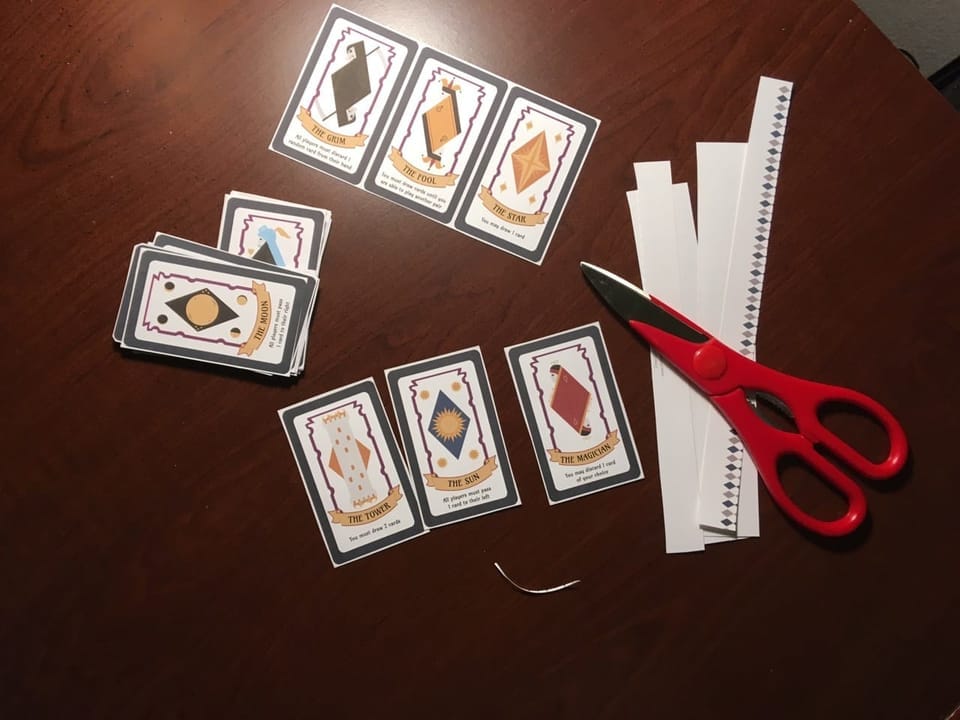
TR: Now, clearly you have been passionate about printable media. What most inspired you to take the plunge and actually start your own game company?
Christine: There are several reasons I would say, really.
Firstly, I've been making games since I was little (I think a lot of people have).We couldn't always afford to get new board games and card games, and even if we did they didn't live up to my childhood imagination. So I would make my own out of paper all the time.
When I was in college, I created my first card game as part of a senior exhibition. I put everything into that game, and enjoyed making it and crafting the world around it so much. When I graduated I wanted to publish the game, but there were so many complications for that.
But there was one day where I was just talking to my brother about the idea of publishing games. (And I had been since I was a senior, I actually started the Hidden Burrow website with him long before now.) I just said, “Why not just print them out yourself?” That's what I did for my exhibit: I printed and cut out all the cards and maps myself, and it worked just fine. That idea grew and we developed it into what it is now.
I was so unhappy with my work and daily life, but making games always brought me joy since I was a kid. And my brother, David, is a big-time gamer and does a lot of DnD adventures and writes his own RPG stories and things, and has since forever. He's also made games in the past, digital and more. So the idea of us launching a company together, both doing what we love, seemed like the right thing to do. I dived into it completely, because that's just my personality, and it took so much work but I was happy the whole time, and still am. Just the idea of getting these games out to people and doing what we love for a living was enough reason to take the dive into launching a company. It may be sad to say that it was my depression that inspired me to take the dive. I just wanted to do what made me happy, and this is it.
TR: I think a lot of people are driven to make their dreams reality and do what they love because of depression.
Christine: Sometimes people are in a rut, and they feel like there's no way out. But then something comes along and pulls you out, and that thing can be different for a lot of people.
TR: Yes, very true. You find that bit of rope or ray of hope, and it leads to new adventures. Now, what has been the biggest challenge in starting a game company? How do you overcome it?
Christine: The biggest challenge at first was time. I think any indie developer can relate to that. When you're working your regular job and also your "dream job," there aren't really enough hours in a day.
Our first batch of games were more Halloween themed so we wanted to get them out in time for Halloween, but there was a whole lot to do and not a lot of time. But because we're family, and we also have the rest of our family supporting us and helping out when they can, we were able to pull through.
Getting everything in order, promoting things, reaching out to people to try the games, playtesting, it's all a challenge, especially at the beginning. However, having a support system that's close really helps, and since we grew up together we can understand each other easily:
What each person is good at and when they need to recharge, and when they need a kick in the pants, haha. But sticking together really helps with all the stress.
I also invested heavily in snacks and ice cream, the real MVP of game design.
TR: So starting a company with a family member or more makes a difference - you're working with someone who knows you well and cares about you. And snacks and ice cream - hah, definitely a big help!
Christine: Exactly. Working with people you trust makes a big difference. Even if we argue about things we're not going to get bent out of shape or take things too hard. No one is the "boss" either, and that helps. Sure, in some situations having one person in charge is good, but I think in our more unique situation it's more about being a team than being in charge.
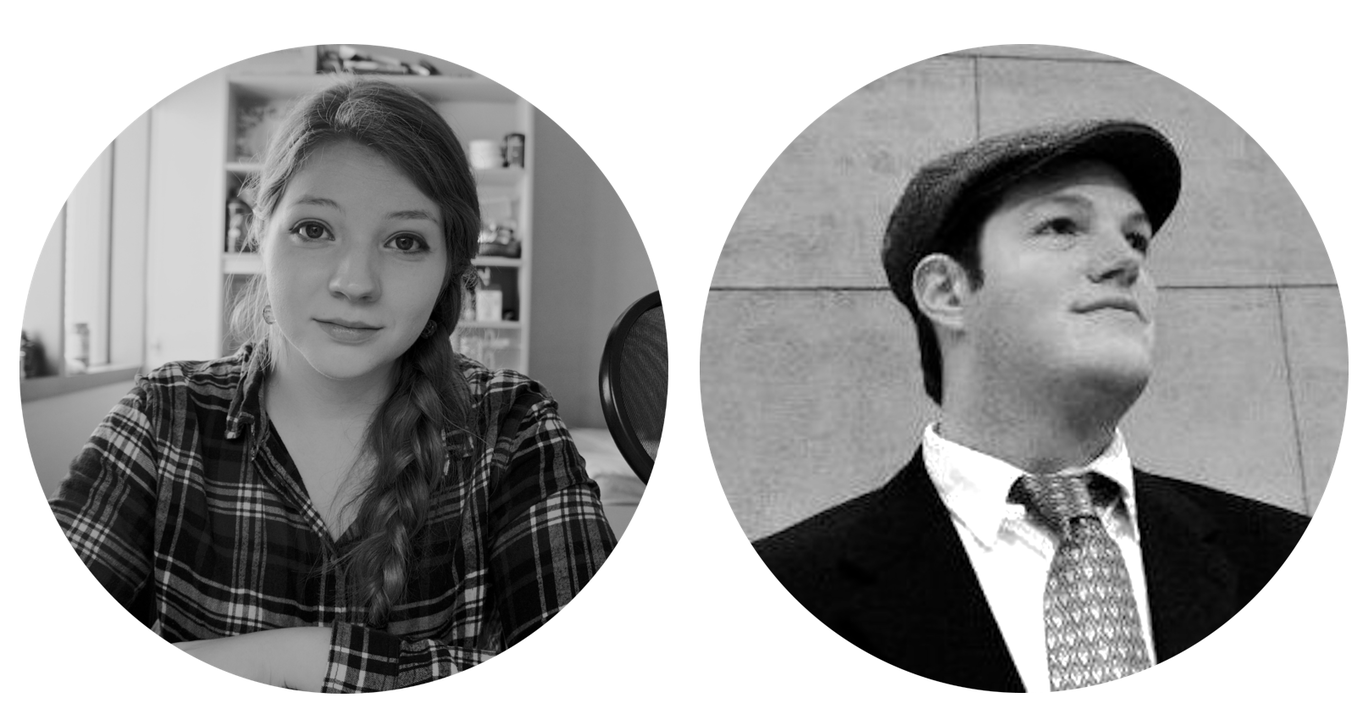
TR: Very true. That can be a big help in the brutal business world. It also makes more sense that a company family-run would lack a boss-and-underling structure. With strangers that works, and really helps, but with family it could be awkward.
What is your favorite part of game design? Additionally, how do you project yourself into your games?
Christine: In design, I focused on research and understanding people. So I love looking into issues people have with games and finding ways to solve them, or seeing what people want in games and meeting that need. Sometimes I'll come up with the basic idea or just a feature I want something to have, and I enjoy that part as well.
With Witches’ Brew, I really wanted to make a game where you made your own cauldrons, and with Mystic Match I wanted to base the style off Tarot. I love coming up with basic concepts a lot or themes. I'm also the one who does the design and art of the games, that's my focus and "job" really. I've been able to embrace my own style much more since making these games, because I know what I like and how I want things to look. The creative process is really the best, and I just like making things and coming up with ideas or aesthetics. David is the one who's good at crafting stories (for the RPGs) and at working out the mechanics of a game – how it should play and feel. I'm not good at making rules or making sure that a game plays and works properly, that's what he enjoys. Because we both have our skill sets and things we enjoy, we're lucky that the other person can fill in the other spots. He comes up with ideas, mechanics, rules, or stories, and then I design them and make sure they look how we want.
The beginning of the game, initial concept, can come from either one of us depending on the game. But yeah, I like coming up with concepts, finding ways to make people happy and solve problems, and taking ideas and making them into something. I put my taste into the games, and my own style of art and design as well. We make things that we like and that we think others will like, so every game has a part of us in it.
TR: What's the process like for designing each Hidden Burrow game, from the initial ideas to finalization? Within this process, how do you approach each piece of artwork in the game?
Christine: Haha, that really varies depending on the game.
With Witches’ Brew it was concept first, rules and art later. Slap Jack-O-Lantern was mechanics first, art later. In Mystic Match the mechanics came much later – well not much, but after the art. Go Dig was mechanics first. And then in the upcoming Mad With Power we spent a very long time on the mechanics and gameplay. So all the games start with an idea. Either an idea of how it should look or a fun mechanic. And from there we toss it back and forth until it comes out how we like, and who starts the "toss off" changes.
Then we do some playtesting – make sure that the game runs well – and make even more changes accordingly.
For the art, I just sort of go with my instincts. I like to design the frames of cards last, if it's a card game. For ones with more paper crafting we make a lot, a lot, of mockups before even getting to the art of it. I'll begin with some basic sketches and then from there it's usually a pretty fast process.
We do very basic sketches first for the mockups when playtesting, because no need to do a bunch of artwork if we're going to change things. Once that's more final I do the art for each game, see if it still plays well with that art, and then finalize the art from there.
I'll always start with the color versions, and then make them black-and-white afterwards, because it's easier to make color into black-and-white than vice-versa (in my opinion). If any of that makes sense, haha. The process changes a lot depending on the game, but in general that's how it works.
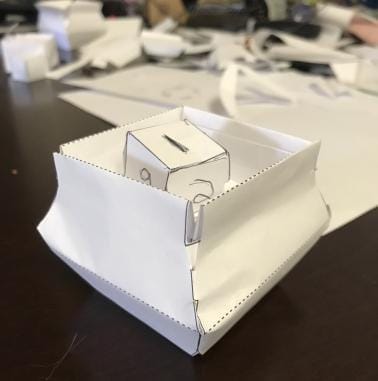
TR: Have you ever experienced an early version of a game "breaking" or encountered many bugs in playtesting? How often do you revise the art - have you ever completely revamped the art style on a project?
Christine: Ohhhh yes. Mad With Power isn't released yet because it's a complex game. We have playtested it a lot, and would find bugs and redo it again. We even completely scrapped it and remade it at one point. Sometimes there would be a single card that needs to be changed in a game. Like the original The Grim card in Mystic Match was changed a day before launch. That's why we try to test them a lot before release. And there were cards or art that I did that got scrapped, or was redone, which is why I hesitate to finalize anything until it's been playtested and looked at thoroughly.
With Go Dig I went through several iterations art-wise – I didn't want the skeleton to look scary or gross [the cards in this game depict skeleton bones – ed.]. So I redid the cards a lot to make them less creepy – probably five or six versions? – until I was happy with them. And I want to make sure that they all feel like they're from "us" (Hidden Burrow). So if they don't have the same look or feel as the others, I'll tweak things like the lines or colors. There comes a point where I have to say it's good enough, otherwise I would tweak them indefinitely.
TR: You have to make a call like that, yes, or it could go on forever. Chasing perfection doesn't end well, because, well...it doesn't end.
How do you make sure that the games will fit a universal printing format (for lack of a more specific phrase)? And what was it like designing the cauldron for Witches' Brew - making sure it worked, and that it could all be printed?
Christine: I formatted everything for A4 paper, because that's pretty standard around the world. Most printers know how to reformat things. If you print an entire pack using the same printer, they'll all be formatted the same way, even if they're resized slightly from the originals. We also include a test page so that before printing you can make sure they will come out properly. You can make sure nothing will be cut off during printing and that things are the size you'd like. But if you go to a print shop and say "A4" they'll know what that is most anywhere. We tried to make it as easy as possible for them to be printed, and if the cards are slightly smaller or bigger it won't matter too much. We've had people print them using different methods, and so far so good!
The cauldron took a very long time to make because we wanted to make it so you could make the cauldron and dice without any tape or glue, and also make it easy, not like advanced origami. So we did a lot of hand drawn trials first, then I moved the designs into Adobe Illustrator and measured them out exactly. And we would print an outline, see how it worked, and then edit and print again. Over and over for a while, haha.
David is pretty good at paper crafting, so it was easier since he knew how to make basic shapes easily. Afterward, I gave the designs some color and personality. Once we had the shape and folds and everything down, we had to make instructions that were easy to follow. We also tried it with various papers to make sure it could be done with any of them, which was another thing that was important to us.
TR: How much customization have you seen from players so far?
Christine: The biggest one is cauldron customization in Witches’ Brew: different paper textures, thickness, and colors. Makes each one unique. People also color in the cards. It's like a coloring book and DIY project and game all in one. It can also make kids more involved in some of the easier games, getting to color them all in beforehand. If you want to make all the pumpkins blue or rainbow for Slap Jack-O-Lantern, go for it! It's your game.
TR: Has anyone made new objects out of the unused paper - like a magic ball for Mystic Match? You know, there could be a lot of "mods" made for these games!
Christine: I haven't seen that, but I would love to! I really love seeing the creativity that other people put into our games. So if people want to make extra things with the leftovers, or repurpose things for everyday life, I love that. Want to use your cauldron to hold potpourri or marbles or pencils? Sure, why not?
Unmasked, coming out soon, is based around masquerade masks. So people can craft their own masks using the base masks – add whatever they want or make something completely new with the template. And I'm really excited to see what people come up with for that. The idea is that you are making your own games, so we want people to try making things their own way as well.
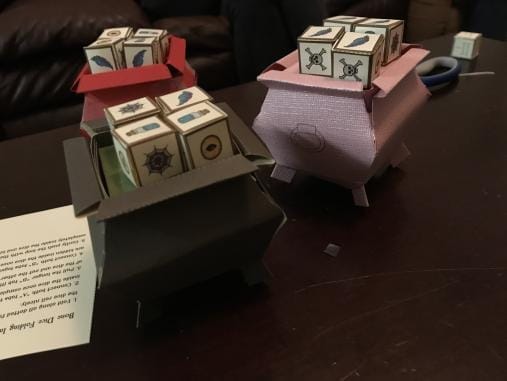
TR: As an enthusiast for fan-made content, I love that dimension to your games. I also want to try to make something unique for one of them myself (hmm)!
You mention Unmasked here, and have also referenced another upcoming title Mad With Power, and an RPG project. Anything else you can and want to say about those or other future projects?
Christine: Unmasked is practically ready, it's just going through the final checks.
Same for Mad With Power.
Unmasked is a party game, it's really easy to play and has a lot of customization. It's a sort of guessing game, based around Victorian parlour games I would say? Simple and easy, but with some of our added flair.
Mad With Power is a complex game, for more experienced gamers who like strategy games. It’s themed around a mad scientist’s lab.
The RPG is going to be a murder mystery, and it has our own style of roleplaying mechanics. That one has been playtested, and we're still adding things and polishing it, so I don't have a release set for that quite yet. But I'll be releasing previews of the characters soon. It's going to be the first of many RPG adventures we're planning on making, and I'm really excited for when it comes out.
TR: Sounds great! What is your favorite Hidden Burrow game so far?
Christine: That really depends. I think Slap Jack-O-Lantern and Go Dig are both really fun to play with a large group. Mystic Match I love how the design came out, and it's a favorite of a lot of people. But I think that Witches’ Brew is my current favorite. It's one I worked on for a long time and really represents my style and general aesthetic. And the cauldrons are really fun to make and display, so it's probably my favorite. But the RPG is one I'm really proud of so far.
TR: When will we see a printable castle with knights and dragons?
Christine: Haha, something like that may or may not be in the works.
TR: Ah! May or may not.
Christine: I'm hoping in the future to expand the paper crafting element of our games,
because although it takes a bit more time to make your own game pieces, it adds a lot of fun as well.
TR: Like the fun of building complex LEGO sets.
Christine: Exactly. Cards are fun and easier to print and cut out, but there's also something fun about making a whole game from scratch, including the dice and game pieces.
TR: Definitely. That's what I've loved about Hidden Burrow games so far: cutting them all out and crafting them, like the cauldron or dice pieces especially, is a part of the fun.
I could keep asking questions about game design, paper craft, running a company, and so on, but for now I think this wraps things up! Any last words you want to share with our readers?
Christine: I would say that there's something about making your own game that I want everyone to experience. And that sometimes people are scared to get into tabletop games, because they can be intimidating, just like roleplaying games. However, physical games like these are a lot of fun, and it's a way that you can spend time with others. Instead of playing Monopoly or something, it can be fun to try something new and make something together with friends or family. Don't be scared to try tabletop games or get into RPGs. Really, just don't be afraid of new things in general?
This whole concept is kind of new. It's not a popular thing, printing and making your own games. But we hope one day it will be, and that this will inspire others to make their own games as well. All of our games are made to be played by anyone anywhere, no matter your skill level or how much you can spend on games. We're even working on having them translated so that you can play them in other languages.
So just get a group of friends or family together, download a game, and try it out! We did all the hard work so you can just enjoy being creative and having fun.
TR: Those are great and inspiring words - thank you very much for sharing! And thank you very much for your time in this interview. It was a pleasure speaking with you. I think now I'm going to go try making my own cauldron (though I know how that might go...) Anyway, thank you again, and I'm looking forward to seeing what comes next!
Christine: Yes, thank you!
You can check out the Hidden Burrow games yourself at the company's website.
Disclosure: the interviewee is a friend of the author.
Have a tip, or want to point out something we missed? Leave a Comment or e-mail us at tips@techraptor.net
